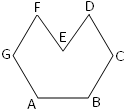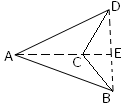Subscribe to our ▶️ YouTube channel 🔴 for the latest videos, updates, and tips.
Convex and Concave Polygons
We will learn about the convex and concave polygons and their properties.
Convex polygon:
If each of the interior angles of a polygon is less than 180°, then it is called convex polygon.
Note: In this type of polygon, no portion of the diagonals lies in the exterior.
Examples of convex polygons:
|
In the adjoining figure of a parallelogram there are four interior angles i.e., ∠BAD, ∠ADC, ∠DCB and ∠CBA. None of the four interior angles is greater than equal to 180° and no portion of the diagonals lies in the exterior. |
|
In the adjoining figure of a rectangle there are four interior angles i.e., ∠CBA, ∠DCB, ∠ADC and ∠BAD. None of the four interior angles is greater than equal to 180°. |
|
In the adjoining figure of a pentagon there are five interior angles i.e., ∠ABC, ∠BCD, ∠CDE, ∠DEA and ∠EAB. None of the five interior angles is greater than equal to 180°. |
|
In the adjoining figure of a triangle there are three interior angles i.e., ∠ABC, ∠BCA, and ∠CAB. None of the three interior angles is greater than equal to 180°. |
Concave polygon:
If at least one angle of a polygon is more than 180°, then it is called a concave polygon.
Examples of concave polygons:
|
In the adjoining figure of a hexagon there are six interior angles i.e., ∠ABC, ∠BCD, ∠CDE, ∠DEF, ∠EFA and ∠FAB. Among the six interior angles, ∠CDE is greater than 180°. |
|
In the adjoining figure of a septagon there are seven interior angles i.e., ∠ABC, ∠BCD, ∠CDE, ∠DEF, ∠EFG, ∠FGA and ∠GAB. Among the seven interior angles, ∠DEF is greater than 180°. |
|
In the adjoining figure of a quadrilateral there are four interior angles i.e., ∠ABC, ∠BCD, ∠CDA and ∠DAB. Among the four interior angles, ∠BCD is greater than 180°. |
Note: In this type of polygon, some portion of the diagonals lies in the exterior of the polygon.
In the above quadrilateral the portion of the diagonal AC i.e., CE lies in the exterior ∠BCD.
● Polygons
Polygon and its Classification
Interior and Exterior of the Polygon
Number of Triangles Contained in a Polygon
Angle Sum Property of a Polygon
Problems on Angle Sum Property of a Polygon
Sum of the Interior Angles of a Polygon
Sum of the Exterior Angles of a Polygon
7th Grade Math Problems
8th Grade Math Practice
From Convex and Concave Polygons to HOME PAGE
Didn't find what you were looking for? Or want to know more information about Math Only Math. Use this Google Search to find what you need.









New! Comments
Have your say about what you just read! Leave me a comment in the box below. Ask a Question or Answer a Question.